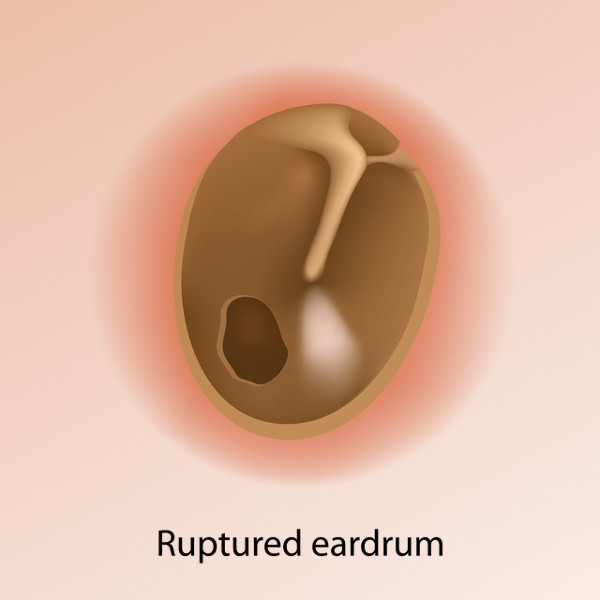Tympanic Membrane Perforation
The eardrum is a small, delicate, oval-shaped membrane that separates the outer ear from the middle ear. This part of the ear serves as a barrier to help stave off infections from spreading to the middle ear from the outer ear. The eardrum is also an integral part of a person’s ability to hear. A hole or rupture in the eardrum is referred to as a tympanic membrane perforation, as the medical term for the eardrum is tympanic membrane. A perforated eardrum is commonly accompanied by a decreased ability to hear, and sometimes a liquid discharge. When the eardrum is perforated, the individual may also experience varying levels of pain. If you are experiencing any of the symptoms listed below, it is important for you to contact your ENT doctor. A perforated eardrum can lead to more serious issues or infection, which could result in a loss of hearing or extreme pain.
Symptoms
The most common symptoms associated with a perforated eardrum are listed below. Symptoms will vary depending on the severity of the tear or rupture.
- Discharge from the ear
- Earache (otalgia)
- Change in hearing
- Bleeding or pus from the ear
- A sense that your ear just “doesn’t feel right”
- Loss of hearing
- Ringing of the ears (tinnitus)
In some severe cases of eardrum perforation there may be damage to the three bones that are located in the middle of the ear. In these cases, you may experience a dramatic loss of hearing and tinnitus.
Causes
The causes of a perforation or tear in the eardrum are usually due to injury, infection, or chronic Eustachian tube disorders. An individual’s eardrum may become perforated from trauma due to one of the following circumstances:
- If the ear is struck directly
- Due to a skull fracture
- After a sudden explosion
- If a foreign object (like a bobby pin, Q-tip, or stick) is pushed too far into the canal of the ear
- Changes in air pressure (called barotrauma) when flying with a severe cold
Treatment
A perforated eardrum can be treated by your ENT doctor, but he will likely perform a hearing test before starting any type of treatment plan. In some cases, patients may require a tympaplasty, which is a surgical procedure where tissue is removed from another part of the body and attached to the area of the eardrum that is perforated. This surgery is usually quite successful in the repair of a perforated eardrum.


